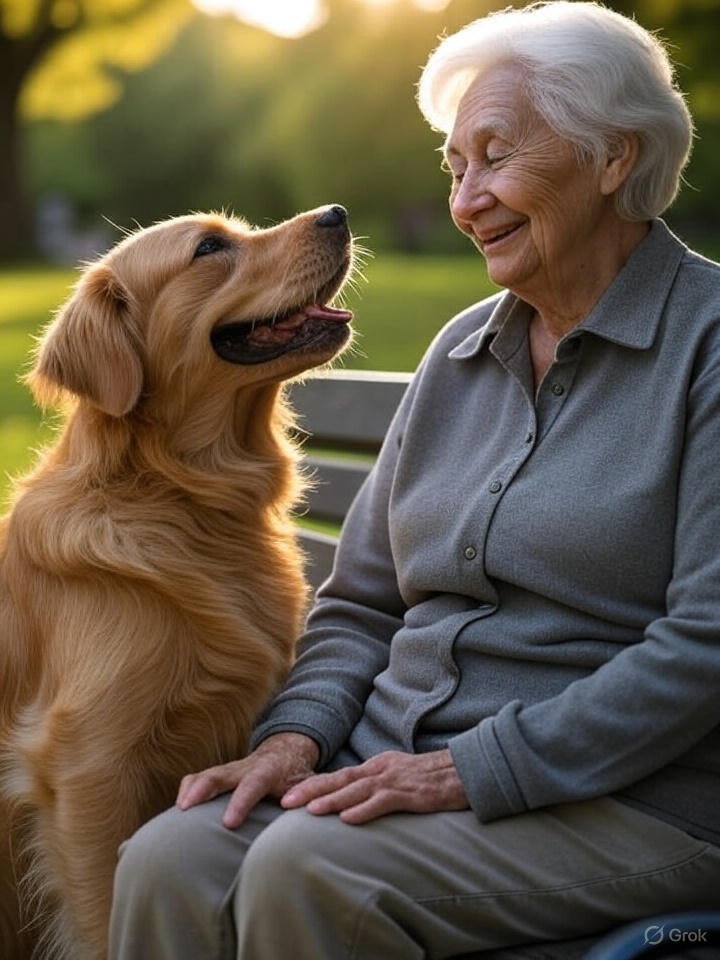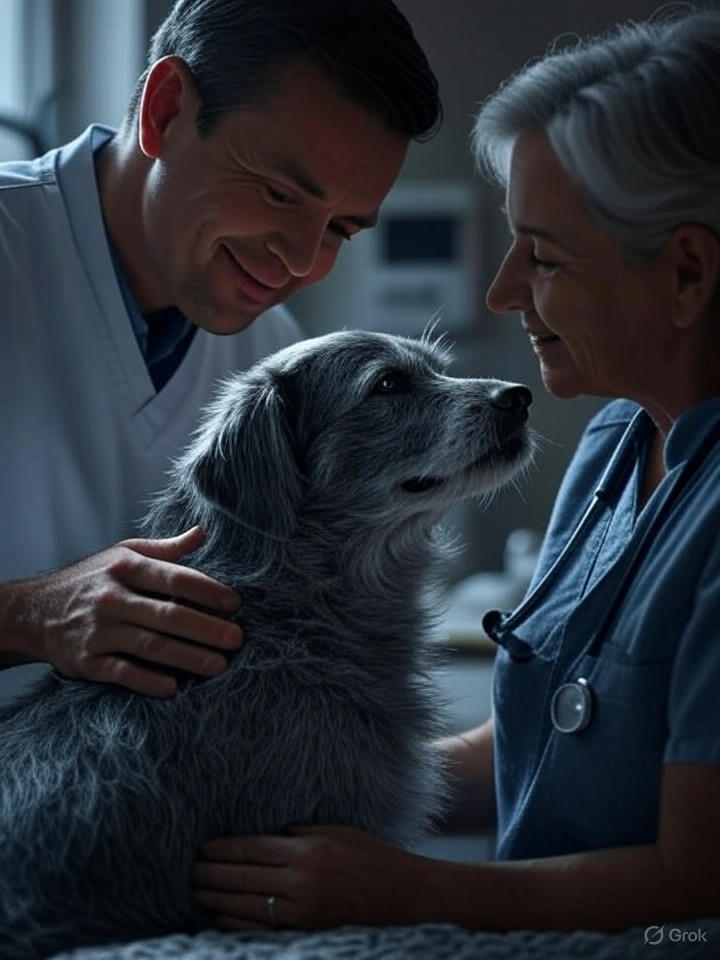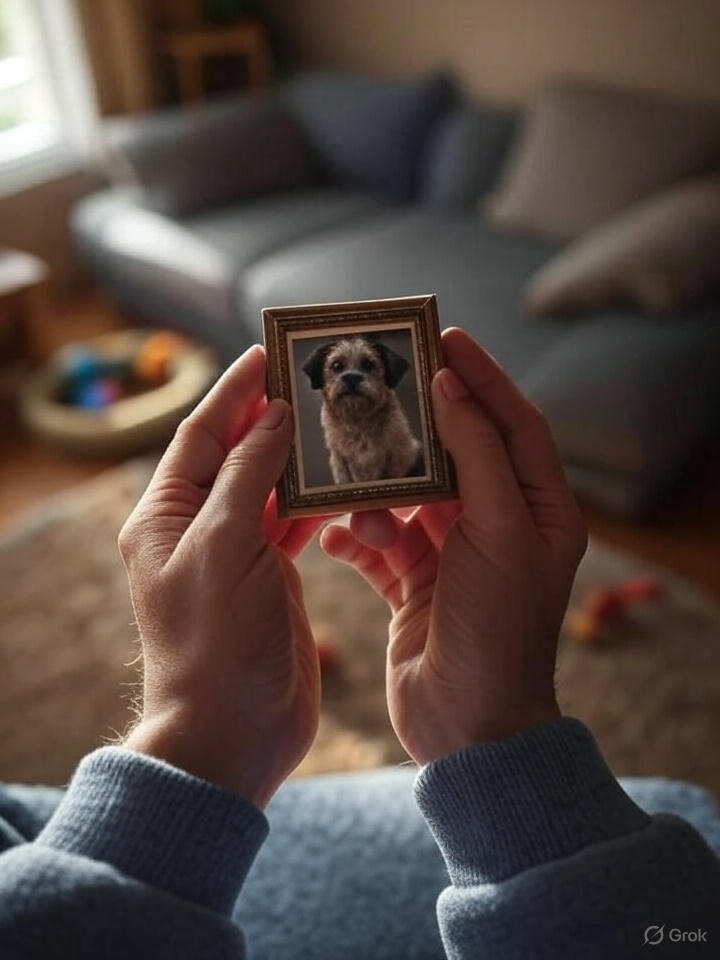The bond between humans and their pets is one of the most profound relationships we can experience. Our furry, feathered, or scaled companions become integral parts of our families, offering unconditional love, companionship, and joy. When these beloved creatures pass away, the grief we feel is real, valid, and often overwhelming. Understanding the process of pet loss, the emotions involved, and the path to healing can help us navigate this difficult journey with compassion for ourselves and others.
Understanding the Human-Animal Bond

The relationship between humans and animals has evolved over thousands of years, transforming from purely utilitarian partnerships to deep emotional connections. According to research published by the American Psychological Association, pet ownership provides numerous psychological benefits, including reduced stress, increased physical activity, and enhanced social connections. Pets become confidants, exercise partners, and sources of comfort during difficult times.
This bond is so significant that the loss of a pet often triggers what psychologists call “disenfranchised grief” – a type of loss that society may not fully recognize or validate. Unlike human death, pet loss is sometimes minimized by well-meaning friends and family who might say things like “it was just a pet” or “you can get another one.” This lack of understanding can make the grieving process even more challenging for pet owners.
The Reality of Pet Grief
Pet grief is a legitimate form of bereavement that deserves recognition and respect. The Mayo Clinic acknowledges that the death of a pet can be as devastating as losing a human family member, particularly for individuals who live alone or have limited social connections. The daily routines, emotional support, and companionship that pets provide create deep neural pathways in our brains, making their absence profoundly felt.
The intensity of pet grief often surprises people. You might find yourself crying unexpectedly, feeling angry, or experiencing physical symptoms like fatigue, loss of appetite, or difficulty sleeping. These reactions are normal and healthy responses to loss. The grief process doesn’t follow a linear timeline, and there’s no “right” way to mourn your pet.
Common Symptoms of Pet Grief
Pet grief manifests in various ways, both emotionally and physically. Understanding these symptoms can help normalize your experience and provide reassurance that your feelings are valid:
Emotional Symptoms:
- Intense sadness and crying spells
- Anger or irritability
- Guilt about decisions made during your pet’s final days
- Denial or disbelief
- Anxiety about the future without your pet
- Depression and loss of interest in activities
- Feeling emotionally numb
Physical Symptoms:
- Changes in appetite
- Sleep disturbances
- Fatigue and low energy
- Headaches or muscle tension
- Digestive issues
- Weakened immune system
Behavioral Changes:
- Avoiding places that remind you of your pet
- Difficulty concentrating at work or home
- Social withdrawal
- Changes in daily routines
- Compulsive behaviors related to pet care items
Factors That Influence Pet Grief
Several factors can influence the intensity and duration of pet grief. Understanding these variables can help you better understand your own grief process and develop realistic expectations for healing.
The Nature of Your Relationship

The strength of your bond with your pet directly correlates with the intensity of your grief. Pets who served as emotional support animals, therapy companions, or primary sources of companionship may leave larger voids in their owners’ lives. Additionally, pets who were present during significant life events or transitions often hold special meaning that amplifies the grief response.
Circumstances of Death
How your pet died can significantly impact your grief experience. Sudden, unexpected deaths may leave owners feeling shocked and unprepared, while prolonged illnesses can create anticipatory grief and difficult end-of-life decisions. Traumatic deaths, such as accidents, may result in complicated grief that requires professional support.
Personal History and Coping Skills
Your previous experiences with loss, current life stressors, and available support systems all influence how you process pet grief. Individuals who have recently experienced other losses may find pet grief particularly challenging, as it can trigger unresolved emotions from previous bereavements.
Social Support
The level of understanding and support you receive from family, friends, and colleagues can significantly impact your healing process. Unfortunately, pet loss is often minimized in our society, leaving many grievers feeling isolated and misunderstood.
The Decision to Euthanize
One of the most difficult decisions pet owners face is whether to euthanize a suffering animal. This choice often brings complex emotions, including guilt, doubt, and second-guessing. The American Veterinary Medical Association provides guidelines for end-of-life care that can help pet owners make informed decisions based on their pet’s quality of life.
Euthanasia, when performed by qualified veterinarians, is a humane way to prevent unnecessary suffering. However, the decision weighs heavily on pet owners who must balance their emotional attachment with their pet’s well-being. Many veterinarians offer quality-of-life assessments that consider factors such as mobility, appetite, hygiene, happiness, and the ability to engage in favorite activities.
Preparing for Euthanasia
If you’ve decided that euthanasia is the most compassionate choice for your pet, consider these steps to make the process as peaceful as possible:
- Choose a familiar environment if possible, such as your home or your pet’s favorite outdoor spot
- Spend quality time with your pet beforehand
- Consider having other family pets present to say goodbye
- Decide whether you want to be present during the procedure
- Discuss cremation or burial options with your veterinarian
- Prepare children and other family members for what to expect
Remember that choosing euthanasia is an act of love, not betrayal. You’re preventing further suffering and ensuring your pet’s final moments are peaceful and surrounded by love.
Helping Children Cope with Pet Loss
Children often form especially strong bonds with family pets, and pet death may be their first encounter with mortality. How you handle this situation can significantly impact their understanding of death and their ability to cope with future losses. Psychology Today offers research-based strategies for helping children navigate pet loss.
Age-Appropriate Explanations
Preschoolers (Ages 3-5): Use simple, concrete language to explain death. Avoid euphemisms like “put to sleep” or “went away,” which can create confusion or anxiety. Instead, explain that the pet’s body stopped working and won’t work again.
School-Age Children (Ages 6-12): Provide more detailed explanations while remaining honest and age-appropriate. Children this age can understand that death is permanent and universal. Encourage questions and validate their emotions.
Teenagers (Ages 13-18): Treat adolescents as young adults who can handle mature discussions about death, suffering, and end-of-life decisions. Include them in family decisions when appropriate and respect their need to grieve in their own way.
Supporting Children Through Pet Grief
- Allow children to express their emotions freely
- Share your own grief to model healthy emotional expression
- Create memorial activities together
- Read age-appropriate books about pet loss
- Consider seeking counseling if grief significantly impacts daily functioning
- Be patient with behavioral regression or changes
Practical Matters After Pet Death
While grieving, you’ll also need to handle practical matters related to your pet’s death. Having a plan can help reduce stress during an already difficult time.
Aftercare Options
Burial: Home burial is legal in many areas but check local regulations first. Choose a location that won’t be disturbed by future construction or landscaping. Consider the depth requirements and environmental factors.
Cremation: Pet cremation services offer individual or communal options. Individual cremation allows you to receive your pet’s ashes, while communal cremation is typically less expensive but doesn’t return ashes to owners.
Pet Cemeteries: Pet cemeteries provide permanent resting places with various memorial options. Research facilities in your area and visit before making decisions.
Memorial Ideas
Creating lasting memorials can help honor your pet’s memory and provide comfort during grief:
- Plant a tree or garden in your pet’s memory
- Create a photo album or scrapbook
- Commission a custom portrait or sculpture
- Donate to animal shelters or rescue organizations
- Write a letter to your pet
- Create a memory box with favorite toys and photos
- Design a personalized headstone or marker
The Grief Process: What to Expect
Pet grief follows similar patterns to other forms of bereavement, though the timeline and intensity vary significantly among individuals. Understanding these phases can help normalize your experience and provide hope for eventual healing.
Initial Shock and Denial
The first response to pet loss is often shock, especially if the death was sudden. You might find yourself listening for familiar sounds, looking for your pet in usual spots, or feeling like the death isn’t real. This protective mechanism gives your mind time to process the reality of loss.
Intense Emotions
As reality sets in, you may experience waves of intense emotions. Sadness, anger, guilt, and anxiety are all normal responses. These emotions may come in waves, hitting unexpectedly and with varying intensity. Don’t try to suppress these feelings; instead, allow yourself to experience them fully.
Searching and Yearning
Many pet owners report searching for their deceased pets, either consciously or unconsciously. You might find yourself looking for your dog during walks or expecting your cat to greet you at the door. This searching behavior is a normal part of grief and typically diminishes over time.
Disorganization
During this phase, daily routines may feel disrupted and meaningless. Simple tasks might seem overwhelming, and you may struggle with concentration and decision-making. This disorganization is temporary but can be frustrating for people accustomed to managing their lives effectively.
Reorganization and Recovery
Gradually, you’ll begin to adapt to life without your pet. This doesn’t mean forgetting or “getting over” your loss, but rather integrating the experience into your life story. You’ll develop new routines, find meaning in the relationship you shared, and possibly consider opening your heart to another pet.
Complicated Grief
While most people navigate pet grief successfully with time and support, some individuals experience complicated grief that interferes with daily functioning. Complicated grief may require professional intervention and can be characterized by:
- Intense grief lasting more than six months without improvement
- Inability to accept the pet’s death
- Persistent yearning and searching for the deceased pet
- Extreme avoidance of reminders
- Loss of meaning and purpose in life
- Inability to trust or connect with others
- Difficulty moving forward with life
If you’re experiencing complicated grief, consider seeking support from a counselor specializing in pet loss or bereavement therapy.
Finding Support During Pet Loss
Grieving alone can prolong and complicate the healing process. Fortunately, numerous resources exist to support pet owners through loss:
Professional Support
Pet Loss Counselors: Specialized counselors understand the unique aspects of pet grief and can provide targeted support. Many offer individual, group, or family counseling sessions.
Pet Loss Hotlines: Several organizations operate free hotlines staffed by trained volunteers who understand pet grief. These services provide immediate support during crisis moments.
Support Groups: Both in-person and online support groups connect grieving pet owners with others who understand their experience. Forbes has featured articles about the growing recognition of pet loss support services.
Online Resources
The internet offers numerous resources for pet grief support, including forums, articles, and virtual memorials. Wikipedia provides comprehensive information about pet loss and rainbow bridge concepts that many find comforting.
Books and Literature
Many authors have written thoughtfully about pet loss, offering comfort and practical advice. Reading about others’ experiences can help normalize your own grief and provide coping strategies.
When to Consider Another Pet
One of the most common questions grieving pet owners face is when, or if, to get another pet. There’s no universal answer to this question, as timing depends on individual circumstances, family dynamics, and personal readiness.
Signs You May Be Ready
- You can think about your deceased pet with more happiness than sadness
- You feel emotionally stable and prepared for new responsibilities
- You want a new pet for companionship, not as a replacement
- You’ve processed the practical and financial aspects of pet ownership
- Your family members are also ready for a new pet
Choosing Your Next Pet
If you decide you’re ready for another pet, consider visiting resources like our guide on great first pets to explore different options that might suit your current lifestyle and emotional needs.
Remember that each pet is unique, and your new companion won’t replace your deceased pet but will create new memories and experiences. Allow yourself to love again without guilt or comparison.
Honoring Your Pet’s Memory
Creating meaningful ways to honor your pet’s memory can provide comfort and help with the healing process. These memorial acts serve multiple purposes: they acknowledge the significance of your relationship, provide a focus for grief energy, and create lasting tributes to your pet’s life.
Creating Lasting Tributes
Photo Projects: Compile your favorite photos into albums, slideshows, or digital frames. Consider creating a photo book that tells your pet’s life story or showcases special moments you shared together.
Charitable Giving: Many pet owners find comfort in making donations to animal shelters, rescue organizations, or veterinary schools in their pet’s name. This transforms grief into positive action that helps other animals.
Artistic Memorials: Commission or create artwork featuring your pet. This might include paintings, sculptures, custom jewelry, or even tattoos that incorporate your pet’s image or paw print.
Written Tributes: Write a letter to your pet, compose a poem, or create a journal documenting your favorite memories. For those seeking spiritual comfort, you might find inspiration through faith-based resources like our verse generator tool which can provide comforting passages during difficult times.
Celebrating Your Pet’s Life
Consider holding a memorial service or celebration of life for your pet. Invite family and friends who knew and loved your pet to share memories and stories. This formal acknowledgment of your pet’s importance can provide closure and community support.
Moving Forward with Love
Healing from pet loss doesn’t mean forgetting your beloved companion or minimizing the relationship you shared. Instead, it involves integrating the love and memories into your ongoing life story. Your pet’s influence on your life continues even after death through the lessons learned, love shared, and positive changes inspired by your relationship.
As you move forward, be patient with yourself and others who may not understand the depth of your grief. Trust in your ability to heal while honoring the special bond you shared with your pet. Consider how your experience might help others facing similar losses, and remember that loving and losing a pet is part of the beautiful, complex experience of sharing our lives with animals.
The rainbow bridge concept, while not scientifically based, provides comfort to many grieving pet owners. This metaphorical place where pets wait for their owners offers hope for reunion and continuing bonds. Whether or not you subscribe to such beliefs, the idea that love transcends physical death can provide solace during the darkest moments of grief.
Conclusion
The death of a beloved pet represents a significant loss that deserves recognition, support, and proper grieving time. While the pain of loss may never completely disappear, it will transform from acute suffering to gentle remembrance. The love you shared with your pet becomes part of who you are, influencing how you connect with other animals and people throughout your life.
Remember that seeking support during pet grief is a sign of strength, not weakness. Whether through professional counseling, support groups, online resources, or trusted friends and family, you don’t have to navigate this journey alone. Your grief is valid, your love was real, and your pet’s life had meaning and value.
As you continue on your healing journey, be gentle with yourself, honor your pet’s memory in ways that feel meaningful to you, and remain open to the possibility of love again. The human capacity for love is not diminished by loss but rather expanded through the experience of loving deeply and grieving fully.
Your pet’s legacy lives on in the love you shared, the joy you experienced together, and the person you became through that special relationship. That is perhaps the greatest tribute of all – allowing the love you received to continue flowing into the world, touching other lives and creating new connections that honor the beautiful bond between humans and their animal companions.
If you’re considering adding a new pet to your family in the future, explore our comprehensive guide on great first pets to help you make an informed decision. For those seeking spiritual comfort during their grief journey, our verse generator tool can provide meaningful passages to support you through this difficult time.





Pingback: Pets for Homes: The Complete Guide to Choosing, Caring for, and Living with Your Perfect Companion - Snapspeak